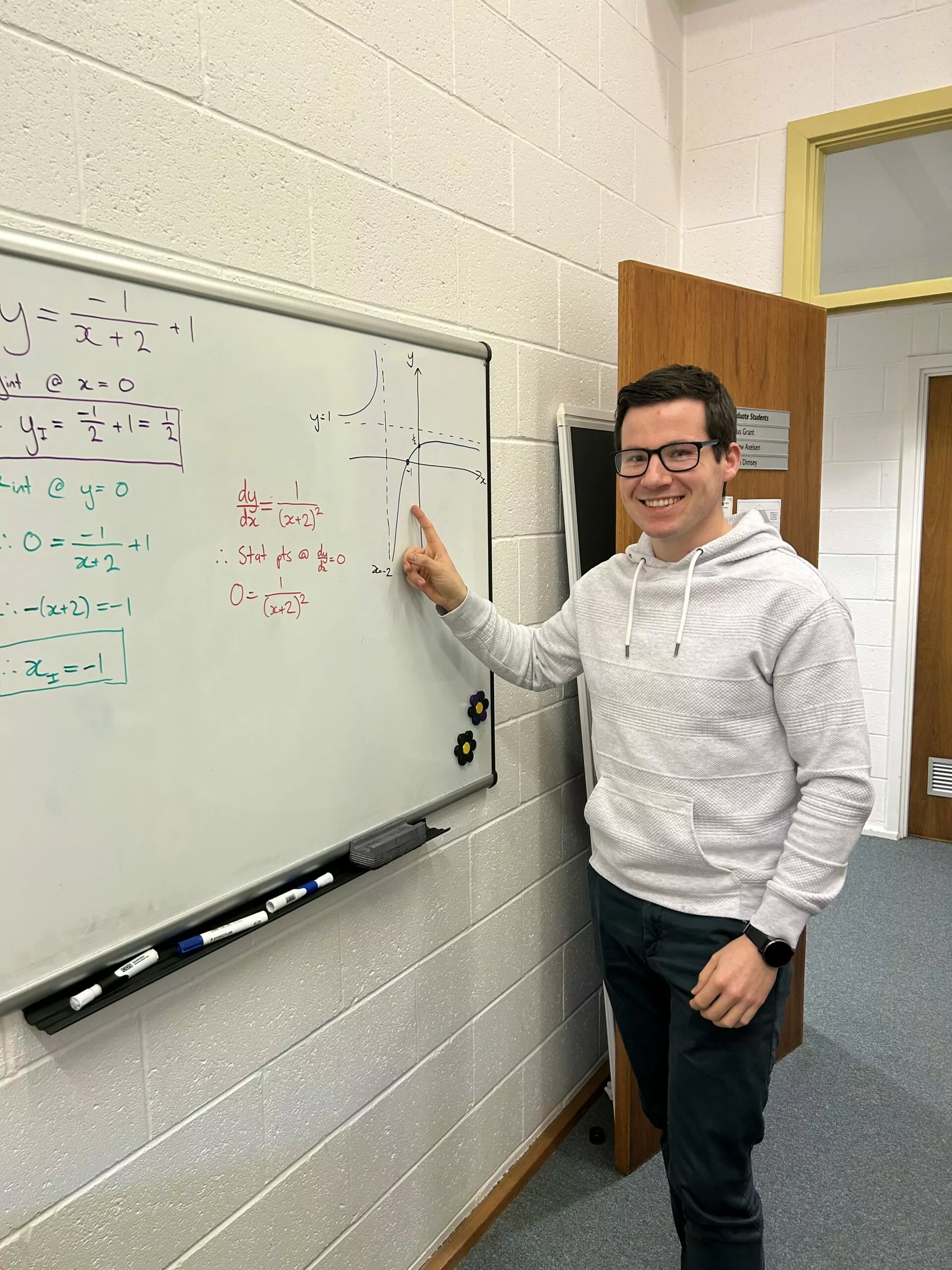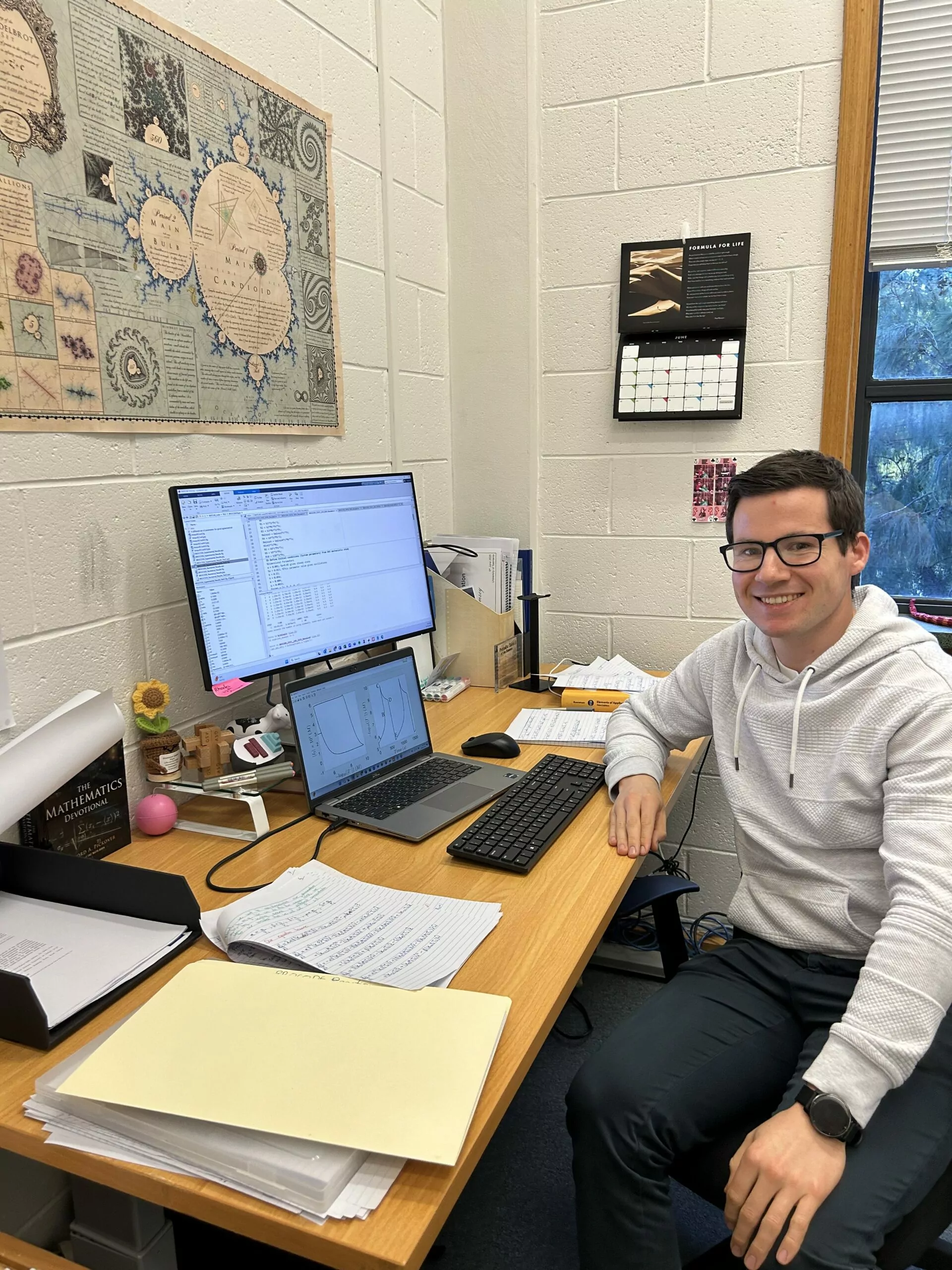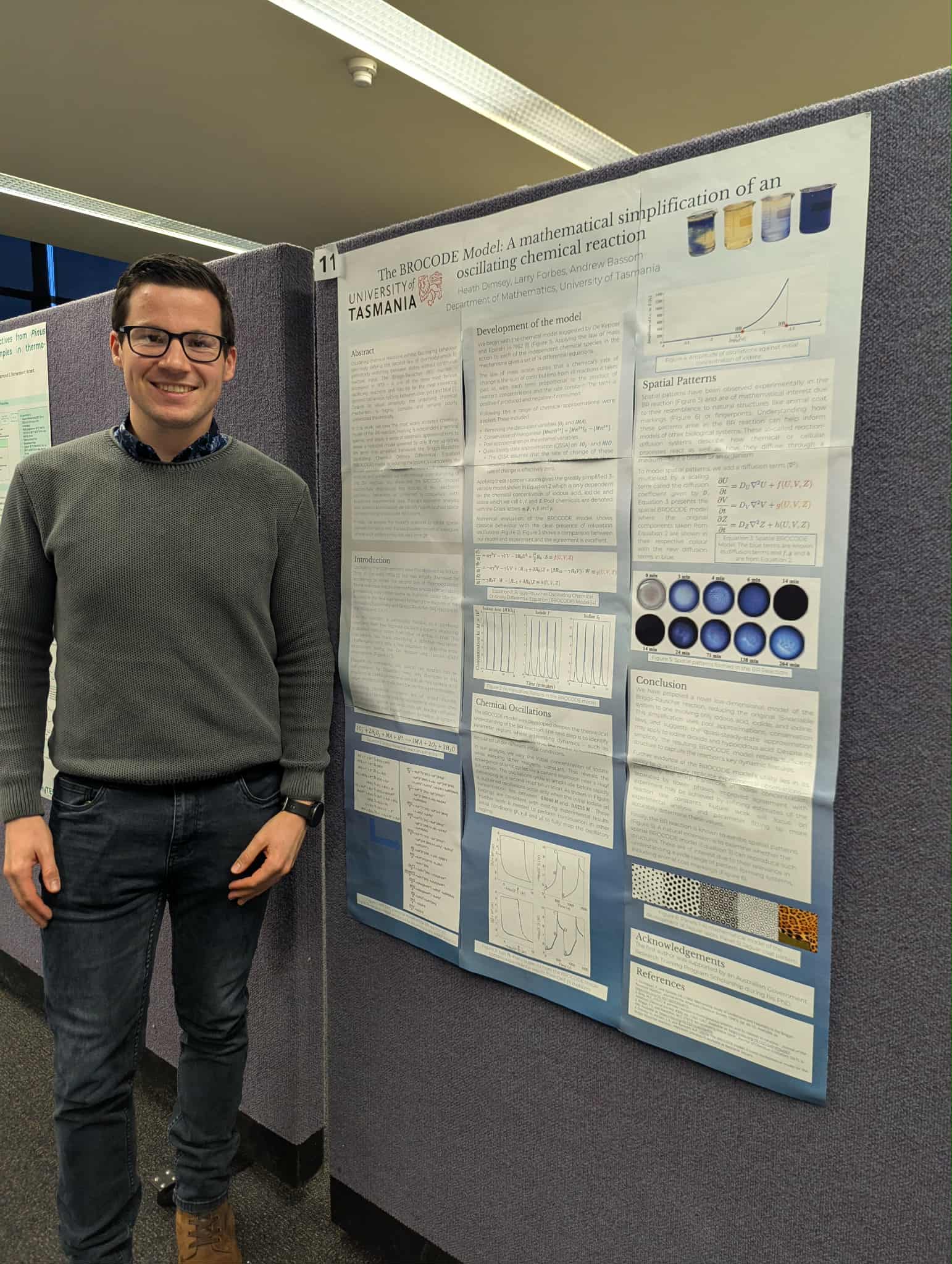Home > Scientists > 2024 > Heath Dimsey

Heath Dimsey
He/Him
Mathemagician
Heath's Notable career moments
-
Completed a maths relay in grade 5 and loved it!
-
Won the Science and Engineering Challenge bridge-building challenge
-
Inspired by my teacher to pursue mathematics
-
Was told I should study medicine. I said no!
-
Started studying maths and chemistry at University
-
Started completing research in maths
-
Tasmanian and Australian Rhodes Scholarship Finalist (but didn't get picked)
-
Published my first piece of maths work!
About Heath Dimsey
Ever wondered why zebras have stripes, why a sunflower’s seeds are arranged in spirals, why music sounds the way it does or why waves form at the beach?
I sure have, and when I finished college, I wanted to know the answers to these questions and so many others. This made choosing just one area of science to study very difficult, so I decided to dive into them all! Since I started studying science, I’ve been able to learn the answers to some fascinating questions like, “Why do chemical reactions change colours?” “How can we tell if an animal is extinct?” or “How does a highly contagious disease like COVID spread through a population?” Pretty cool, right? If you think so, you’ll be surprised when I tell you that I study maths!
Now wait a minute, I know maths isn’t meant to be cool, but it really is. I know when you do maths at school you probably think “why are we doing this?” or “There’s no real-world application” or just “Maths is boring”. How do I know? Simple, I used to think the same AND I still agree that some maths is really boring. This is why I’m a special type of maths nerd called an applied mathematician; this means that I apply maths to solve real world problems.
I spend most of my time as a researcher trying to work out why certain patterns form in chemical reactions. To do this, we use a whole lot of maths equations to simulate all the different chemicals in a reaction and what they do. By solving these equations using complicated computer code we can then determine what patterns should form and we can compare this to what happens in real life. This is important as it tells us about a lot of processes that occur in nature as well as in your own body!
Mathematics is everywhere—it’s like the secret language that controls everything around us and that’s why I love applied maths.
Heath's Photo Gallery


